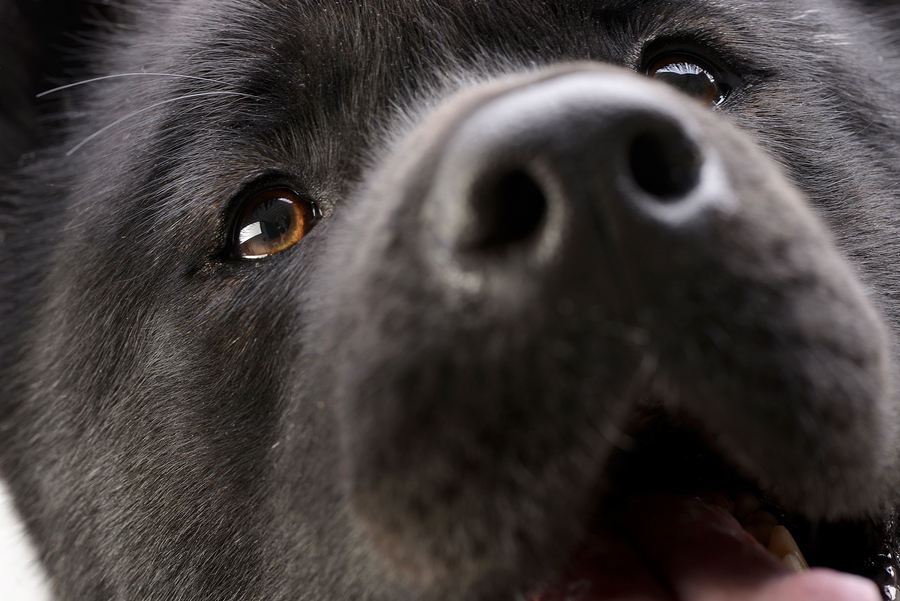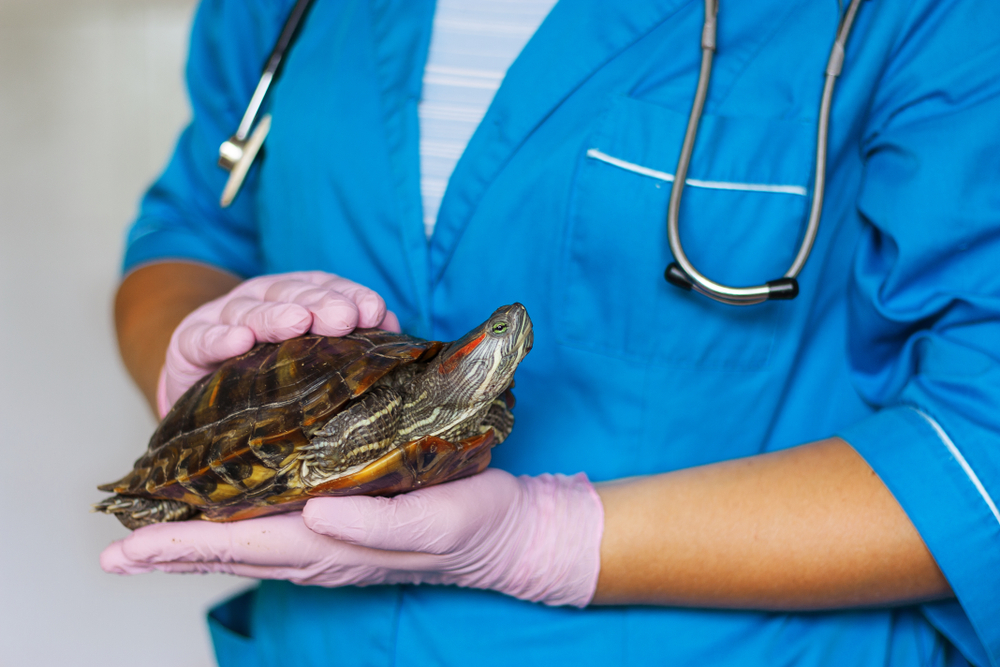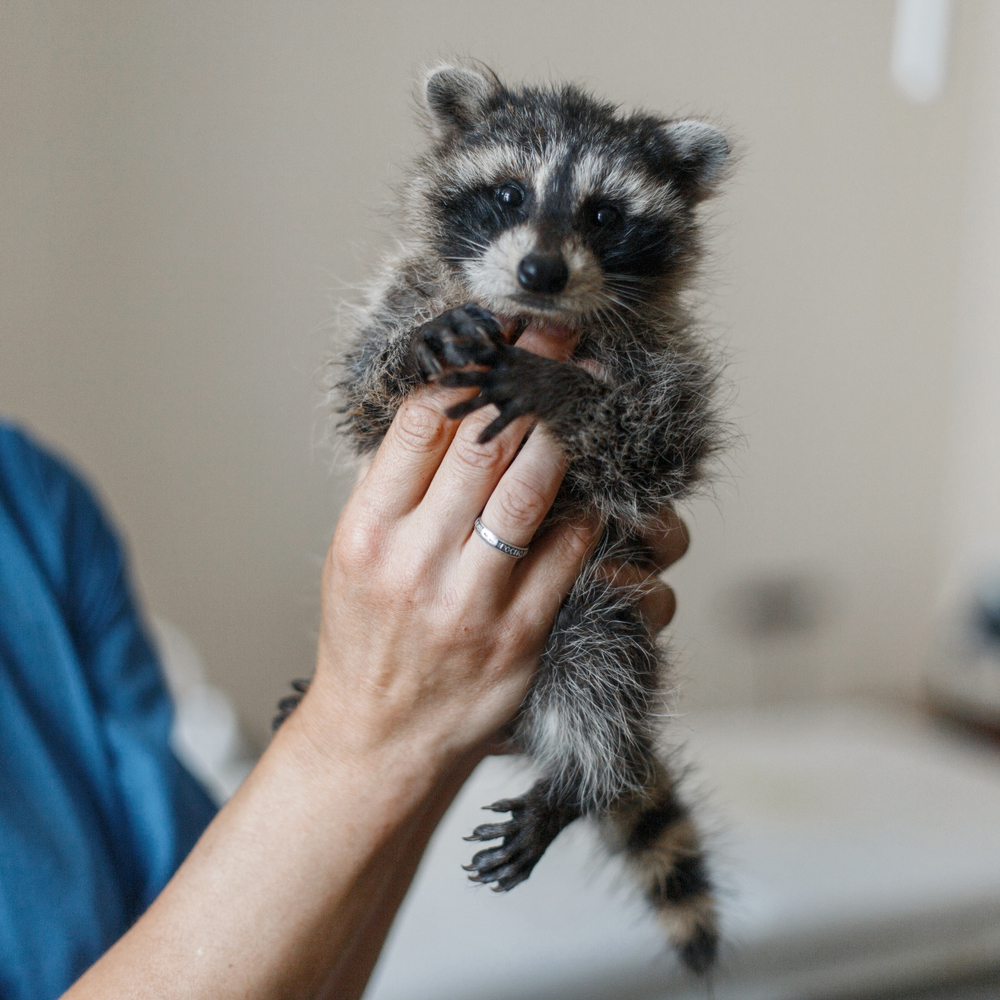Linda Lombardi
Low-stress handling techniques are better for all pets, but they’re particularly important for exotics.
“With exotics, you really want to minimize distress, because a lot of them when they’re sick are really prone to cardiovascular failure,” says Jörg Mayer, DVM, DABVP, associate professor of zoological medicine at the University of Georgia.
Exotics are more stressed by handling than domestic animals, and diagnostic imaging can present particular challenges since you need the animal to keep still. Anesthesia will do it, of course, but can present its own problems. Dr. Mayer uses a number of techniques that can eliminate the need for anesthesia in some cases while keeping animals calm and still.
Dark Means Calm
One simple trick is to take advantage of diurnal animals’ natural response to light and darkness, a technique Mayer often uses with birds.
“In the wild, you don’t see a goose flying at night,” he says, “To them, the moment the lights go off, that means ‘We should be resting.’”
Darkness, then, will calm waterfowl. The same is true for parrots.
“A lot of psittacines need a high intensity of light in order to see, so if you can just dim the room, they simmer right down,” he says. It doesn’t need to be pitch black, so you can get the benefit of this effect while still being able to see well enough to do the job.
With birds Mayer says often the image does not need to be perfect or detailed; for example, a scan to see if they’re eggbound or have swallowed something toxic such as a lead sinker. In this case, waterfowl may be laid on their backs in a darkened room and will hold still for long enough without distress. “It’s a very quick scan, so you don’t necessarily need the absolutely perfect position for them,” he says.
Parrots, on the other hand, would be extremely stressed by that position, but can often be scanned on a perch in a darkened room or, if they’re too sick to perch, in a box.
Benzodiazepines Have Multiple Benefits
For cases requiring more detailed imaging, Mayer says heavy sedation is often all that’s needed. Benzodiazepines have several beneficial effects. For an intelligent bird such as a parrot, it’s significant that these drugs suppress both anxiety and memory.
“With very smart birds like most of these psittacines, you do a couple of procedures and quickly they learn that the guy in the white coat is really bad news, because every time he comes he does something horrible to you,” he says. “So this is where these benzodiazepines, because they’re amnesic and anxiolytic, help significantly because there’s no learning effect, so this makes future exams less stressful.”
Small mammals such as rabbits may be too weak to move much when ill, but that doesn’t mean you should try to image them with no medication. “We don’t really want to handle them without any sedation, because that gets the blood pressure up and gets the heart rate up and that’s exactly what you don’t want,” Mayer says. “With a very sick or compromised patient, that can be enough to push them over the edge.”
Benzodiazepines are safe to use in the face of the possibility of cardiovascular complications. “The nice thing is that these have no real cardiovascular depressant effect, so we can use them in the most critically ill patients.”
Use Containers
Mayer has several strategies for containing different animals for imaging. Rabbits frequently need the head imaged to look for dental disease. He’ll contain the lightly sedated animal in a clear acrylic box surrounded and propped up by towels, which help them feel secure and calm.
“They like to feel like they can lean against something,” he says. “And in the clear acrylic box, it’s safe for the animal–even if they would want to walk off the table they can’t–and we can see the animal, so in case they are struggling we can intervene.”
Containers are also the best approach for aquatic animals, since imaging works through water. “Keeping the animal in the natural environment, like an amphibian or fish in water, is the least stressful, so you can do it and the animal doesn’t even know that something happened.”
Imaging a fish might not be an everyday event, but Mayer says he has done quite a few procedures on valuable fish like koi, such as radiographs to check the swim bladder or look for spine fractures.
“You can leave them in a container and shoot the x-rays through the water, or keep them in a plastic bag. That works really well and that means absolutely no restraint,” he says. “You just have to have a little bit of patience and use a smaller container so they don’t swim constantly left and right. Once they get used to it, you can just take a little time and take the radiograph once the fish is in the right position.”
Reptile Dos and Don’ts
With iguanas and other lizards, Mayer often takes advantage of a simple trick of physiology. “What you can do is put pressure on the eyeball, and that induces the vasovagal response,” he says. The heart rate and blood pressure come down and this calms them. “You don’t need to use drugs and they’re not stressing out because everything in their system is telling them to just relax.”
What you should not use, he says, is artificial cooling. “People say, ‘Just put them in the refrigerator and chill them down and they don’t move,” he says. “We don’t advocate this as an appropriate way to deal with these animals.”
It’s a misconception that that would be similar to what a reptile or amphibian would experience in nature. “Hibernation is a more complicated process,” he says. “The animal prepares for that–they stop eating, they empty the GI tract, it’s a gradual thing–they don’t suddenly find themselves in a refrigerator.”
Animals Hide Weakness
For any procedure, Mayer says, remember that all of these animals do feel pain and stress even if it’s not apparent. Not only are we less skilled at reading their signs, they are expert at concealing distress.
“That is hard-wired in them, so with exotics we have to be extra cautious,” he says. “The little dog has no problem limping into the vet clinic and showing that it’s lame, but the rabbit or bird know that if they do that, they’re going to be someone’s dinner.”
Mayer says that in a study testing effectiveness of a pain drug in iguanas, researchers found that behavior was different depending on whether someone was watching. “They noticed that when the iguana knows it’s being watched, it shows significantly less signs of pain, compared to when they used a camera to observe them,” he says. “That’s the prey animal’s instinct, to suppress any signs of weakness.”
This article was reviewed/edited by board-certified veterinary behaviorist Dr. Kenneth Martin and/or veterinary technician specialist in behavior Debbie Martin, LVT.

 This article is brought to you in collaboration with our friends at Virox/Rescue Disinfectants.
This article is brought to you in collaboration with our friends at Virox/Rescue Disinfectants.







